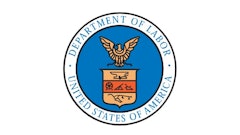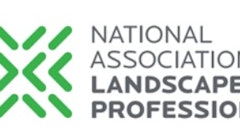UPDATE: Congressional faction developing to attempt stoppage of Clean Water Rule. Read story here
In what the EPA calls an historic step for the protection of clean water, the U.S. Environmental Protection Agency (EPA) and the U.S. Army finalized the Clean Water Rule on May 27 to protect from pollution and degradation the streams and wetlands that form the foundation of the nation’s water resources.
According to a news release at EPA’s website, the Clean Water Rule ensures that waters protected under the Clean Water Act are more precisely defined and predictably determined, making permitting less costly, easier and faster for businesses and industry. The rule is grounded in law and the latest science, and is shaped by public input, EPA assures. The rule does not create any new permitting requirements for agriculture and maintains all previous exemptions and exclusions.
“For the water in the rivers and lakes in our communities that flow to our drinking water to be clean, the streams and wetlands that feed them need to be clean too,” said Gina McCarthy, EPA administrator. “Protecting our water sources is a critical component of adapting to climate change impacts like drought, sea level rise, stronger storms, and warmer temperatures—which is why EPA and the Army have finalized the Clean Water Rule to protect these important waters, so we can strengthen our economy and provide certainty to American businesses.”
“Today's rule marks the beginning of a new era in the history of the Clean Water Act,” said Jo-Ellen Darcy, assistant secretary for the Army (Civil Works). “This is a generational rule and completes another chapter in history of the Clean Water Act. This rule responds to the public's demand for greater clarity, consistency, and predictability when making jurisdictional determinations. The result will be better public service nationwide."
Pesticide and Landscape Industries Not Pleased
RISE (Responsible Industry for a Sound Environment) says it cannot support the Clean Water Rule because it will negatively impact public health and safety significantly. The rule creates an overreach of federal power by requiring permits for pesticide application near any collected water, no matter how small or contained. RISE is a national trade association representing manufacturers, formulators, distributors and other industry leaders involved with specialty pesticides.
“Along with thousands of stakeholders, we asked EPA and the Corps for clarity on the definition of the waters of the U.S. What we got in return is a regulation so expansive it includes golf course ponds or water collecting in ditches,” said Aaron Hobbs, RISE president. “The sweeping redefinition impacts every pesticide treatment near water, including those to treat mosquitoes and help prevent mosquito-borne diseases; to keep power, highway, rail and shipping infrastructure safe and useable; and to eradicate invasive and non-native plant and insect species.
“Federal, state and local governments will see immediate impacts to their vector control programs and their ability to effectively protect people, pets and communities from West Nile Virus, Dengue Fever, heartworm, Eastern and Western Equine Encephalitis, and the most recent threat, Chikungunya,” Hobbs added. “Towns in Colorado and Alabama have already had to face the decision of either protecting people by spraying for mosquitoes under the high-cost and time-consuming Clean Water Act permitting or determining the costs and liability are simply too high to control the mosquito population in spite of their obligation to protect public health. The new regulation puts every state and county in this position."
Tom Delaney, director of government affairs for the National Association of Landscape Professionals, says the landscaping industry in general has reason to be concerned about the new Clean Water Rule. “The rule is substantially similar to the proposed rule that NALP has been actively opposing since its release early last year,” Delaney said.
Delaney points to several Rule requirements that landscape professionals may need to consider as they maintain their customers’ properties:
- National Pollutant Discharge Elimination System (NPDES) permits are currently required for the application of pesticides to water to control algae, aquatic weeds and mosquitoes. Since the rule extends CWA (Clean Water Act) regulation to some man-made residential community lakes and ponds, NPDES permits could be required for pesticide applications to these waters.
- CWA Section 404 (wetlands dredge and fill) permits could be required to install trees, plants, patios and other landscape features on private property that are deemed to be in a floodplain or include Waters of the United States.
Total Maximum Daily Loads (TMDLs) are the maximum amount of a pollutant allowed in a given water body. EPA used the TMDL program in the Chesapeake Bay to compel states to set limits on nutrient applications. Smaller water bodies that are now subject to CWA regulation could now face similar requirements.
What EPA says the Clean Water Rule Actually Does
Clearly defines and protects tributaries that impact the health of downstream waters. The Clean Water Act protects navigable waterways and their tributaries. The rule says that a tributary must show physical features of flowing water—a bed, bank, and ordinary high water mark—to warrant protection. The rule provides protection for headwaters that have these features and science shows can have a significant connection to downstream waters.
Provides certainty in how far safeguards extend to nearby waters. The rule protects waters that are next to rivers and lakes and their tributaries because science shows that they impact downstream waters. The rule sets boundaries on covering nearby waters for the first time that are physical and measurable.
Protects the nation’s regional water treasures. Science shows that specific water features can function like a system and impact the health of downstream waters. The rule protects prairie potholes, Carolina and Delmarva bays, pocosins, western vernal pools in California, and Texas coastal prairie wetlands when they impact downstream waters.
Focuses on streams, not ditches. The rule limits protection to ditches that are constructed out of streams or function like streams and can carry pollution downstream. So ditches that are not constructed in streams and that flow only when it rains are not covered.
Maintains the status of waters within Municipal Separate Storm Sewer Systems. The rule does not change how those waters are treated and encourages the use of green infrastructure.
Reduces the use of case-specific analysis of waters. Previously, almost any water could be put through a lengthy case-specific analysis, even if it would not be subject to the Clean Water Act. The rule significantly limits the use of case-specific analysis by creating clarity and certainty on protected waters and limiting the number of similarly situated water features.
When is a permit needed? A Clean Water Act permit is only needed if a water is going to be polluted or destroyed. The Clean Water Rule only protects the types of waters that have historically been covered under the Clean Water Act. It does not regulate most ditches and does not regulate groundwater, shallow subsurface flows, or tile drains. It does not make changes to current policies on irrigation or water transfers or apply to erosion in a field. The Clean Water Rule addresses the pollution and destruction of waterways – not land use or private property rights.
The rule protects clean water necessary for farming, ranching, and forestry and provides greater clarity and certainty to farmers about coverage of the Clean Water Act. Farms across America depend on clean and reliable water for livestock, crops, and irrigation. The final rule specifically recognizes the vital role that U.S. agriculture serves in providing food, fuel, and fiber at home and around the world. The rule does not create any new permitting requirements for America’s farmers. Activities like planting, harvesting, and moving livestock have long been exempt from Clean Water Act regulation, and the Clean Water Rule preserves those exemptions.
Why EPA Says the Clean Water Rule Is Important
People need clean water for their health: About 117 million Americans (one in three people) get drinking water from streams that lacked clear protection before the Clean Water Rule. America’s cherished way of life depends on clean water, as healthy ecosystems provide wildlife habitat and places to fish, paddle, surf, and swim. Clean and reliable water is an economic driver, including for manufacturing, farming, tourism, recreation, and energy production. The health of our rivers, lakes, bays, and coastal waters are impacted by the streams and wetlands where they begin.
Protection for many of the nation’s streams and wetlands has been confusing, complex, and time-consuming as the result of Supreme Court decisions in 2001 and 2006. EPA and the Army are taking this action today to provide clarity on protections under the Clean Water Act after receiving requests for over a decade from members of Congress, state and local officials, industry, agriculture, environmental groups, scientists, and the public for a rulemaking.
In developing the rule, the agencies held more than 400 meetings with stakeholders across the country, reviewed over one million public comments, and listened carefully to perspectives from all sides. EPA and the Army also utilized the latest science, including a report summarizing more than 1,200 peer-reviewed, published scientific studies which showed that small streams and wetlands play an integral role in the health of larger downstream water bodies.
Climate change makes protection of water resources even more essential. Streams and wetlands provide many benefits to communities by trapping floodwaters, recharging groundwater supplies, filtering pollution, and providing habitat for fish and wildlife. Impacts from climate change like drought, sea level rise, stronger storms, and warmer temperatures threaten the quantity and quality of America’s water. Protecting streams and wetlands will improve our nation’s resilience to climate change.



























